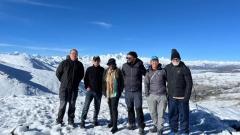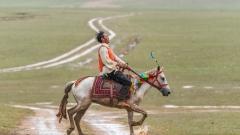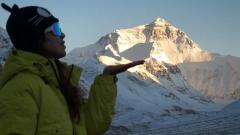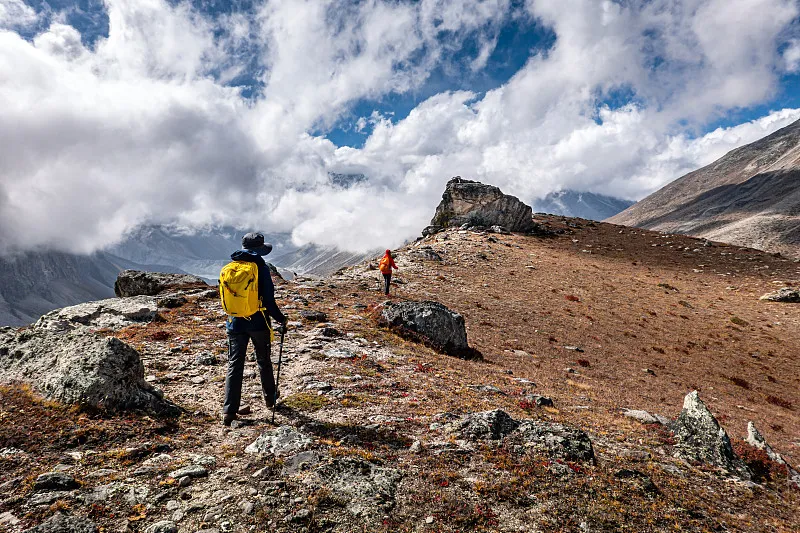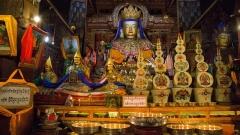When visiting Tibet, one encounters kora, the sacred act of walking around temples, stupas, or holy mountains. For Tibetans, it symbolizes devotion, purification, and spiritual connection. Always done clockwise, this ritual aligns with the sun, honors Buddhist tradition, and reflects harmony with the cosmos. Exploring its origins and meanings reveals why kora remains central to Tibetan life.
1. The Origins of Kora in Tibet
The practice of circumambulation predates Buddhism in Tibet. Before the arrival of Buddhism in the 7th century, Tibetans followed the Bon religion, an indigenous belief system rooted in animism and shamanistic practices. Early Bon practitioners performed circumambulation around mountains, lakes, and natural sites they believed to be inhabited by spirits.
When Buddhism was introduced, it absorbed many Bon traditions but reinterpreted them in a Buddhist framework. Thus, the act of kora became standardized as a form of Buddhist devotion, with the direction of walking changing to clockwise in alignment with Indian Buddhist customs.
In essence, kora represents the blending of ancient Tibetan spirituality and Buddhist philosophy, making it a living tradition that still resonates deeply with local communities.

2. The Spiritual Symbolism of Walking Clockwise
2.1 Alignment with the Sun and Cosmos
One of the main reasons for walking clockwise is to follow the movement of the sun. In Buddhist thought, the sun represents wisdom, light, and the eternal truth. Walking clockwise symbolizes harmony with the natural order and the cosmic rhythm of life.
2.2 Following the Right-Hand Principle
In Buddhist and Hindu traditions, the right side of the body is considered pure and auspicious. When circumambulating clockwise, the right hand always faces the sacred object, showing respect and keeping the holy site in the position of honor.
2.3 Purification and Merit
Each step taken clockwise is believed to accumulate merit (positive karma) and purify past misdeeds. The more circuits a devotee completes, the more blessings are accumulated. For some Tibetans, lifelong devotion means performing kora daily, sometimes thousands of times over a lifetime.
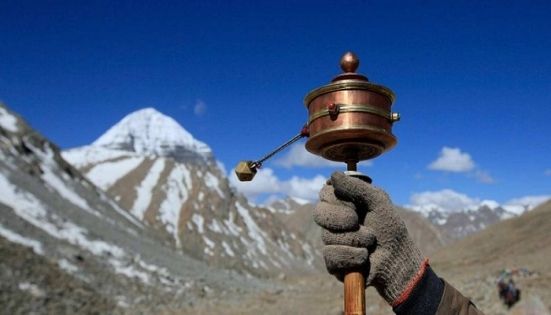
3. Key Places for Kora in Tibet
Tibet offers countless sacred sites for kora, but some are world-famous pilgrimage destinations.
-
Barkhor Street, Lhasa: Pilgrims from across Tibet walk clockwise around Jokhang Temple, spinning prayer wheels and chanting mantras.
-
Mount Kailash: The holiest mountain in Tibet, where one kora is believed to cleanse a lifetime of sins, and 108 koras bring enlightenment.
-
Tashilhunpo Monastery, Shigatse: Home to Tibet’s second-largest kora circuit, where locals gather daily.
-
Lake Manasarovar: Pilgrims circle the sacred lake, believed to cleanse the soul and heal the body.
At each site, clockwise walking is a visible expression of faith and continuity with centuries of tradition.
4. Contrasting Practices: Bon and Counter-Clockwise Kora
Interestingly, not all Tibetans walk clockwise. Followers of the Bon religion walk counter-clockwise around sacred sites. This reflects the older pre-Buddhist custom, which emphasizes a different spiritual cosmology.
Today, in places like Mount Kailash, you may see Buddhist pilgrims walking clockwise and Bon practitioners counter-clockwise on the same path. Far from being a source of conflict, this coexistence demonstrates the cultural diversity and religious tolerance within Tibetan society.
5. Anthropological Perspectives
From an anthropological standpoint, kora serves multiple functions beyond religion:
-
Social Gathering: Markets and communities often develop around kora circuits, making them places of both spiritual and social exchange.
-
Cultural Identity: Participating in kora affirms one’s Tibetan identity, linking individuals to their ancestors and cultural heritage.
-
Psychological Comfort: The repetitive act of walking and mantra chanting induces a meditative state, reducing stress and fostering inner peace.
6. The Role of Prayer Wheels and Mantras
During kora, pilgrims often spin prayer wheels filled with scrolls of written mantras, most commonly Om Mani Padme Hum. The clockwise turning of the wheels mirrors the clockwise walking, reinforcing the symbolism of harmony and devotion.
The sound of murmured mantras, the sight of turning wheels, and the steady rhythm of footsteps combine to create an atmosphere of profound spiritual energy.
7. Pilgrimage as a Lifelong Journey
For Tibetans, pilgrimage is not just a religious duty but also a life’s journey. Many villagers walk long distances, sometimes for months, to reach Lhasa or Mount Kailash. Some even perform full-body prostrations along the entire kora route, a practice that can take years to complete but is believed to accumulate immense merit.
In this sense, walking clockwise is not simply about physical direction; it is about orienting one’s life toward enlightenment.
8. The Symbol of Cycles and Rebirth
Walking in a circle represents the cyclical nature of existence—birth, death, and rebirth. The clockwise direction mirrors the Buddhist understanding of samsara (the cycle of life) and the aspiration to move forward toward liberation.
9. Modern Relevance of Clockwise Kora
Even in modern Tibet, where cities are expanding and lifestyles are changing, the tradition of kora remains strong. In Lhasa, you will see elderly Tibetans walking clockwise around temples every morning, prayer wheels in hand, while younger generations often join them during festivals or holidays.
For visitors, joining a kora respectfully can be a meaningful way to connect with Tibetan culture and spirituality.
10. Practical Advice for Travelers
-
Respect the Direction: Always walk clockwise when joining Tibetan Buddhists in kora. Walking in the wrong direction can be seen as disrespectful.
-
Dress Modestly: Sacred sites require appropriate attire—avoid revealing clothing.
-
Participate Respectfully: You may spin prayer wheels, chant softly, or simply walk in silence.
-
Be Mindful of Photography: Always ask before taking photos of pilgrims.
Conclusion
The clockwise circumambulation in Tibetan kora is far more than a ritualistic detail—it is a symbol of devotion, cosmic harmony, cultural identity, and spiritual aspiration. Rooted in ancient traditions and reinforced by Buddhist philosophy, this practice embodies the Tibetan way of life, where the sacred and the everyday are seamlessly intertwined.
Whether you watch pilgrims circling Jokhang Temple in Lhasa, join the long lines of devotees around Mount Kailash, or observe local families on Barkhor Street, you are witnessing a living tradition that has endured for centuries.
By walking clockwise, Tibetans align themselves with the universe, honor the sacred, and take one step closer to spiritual liberation.



